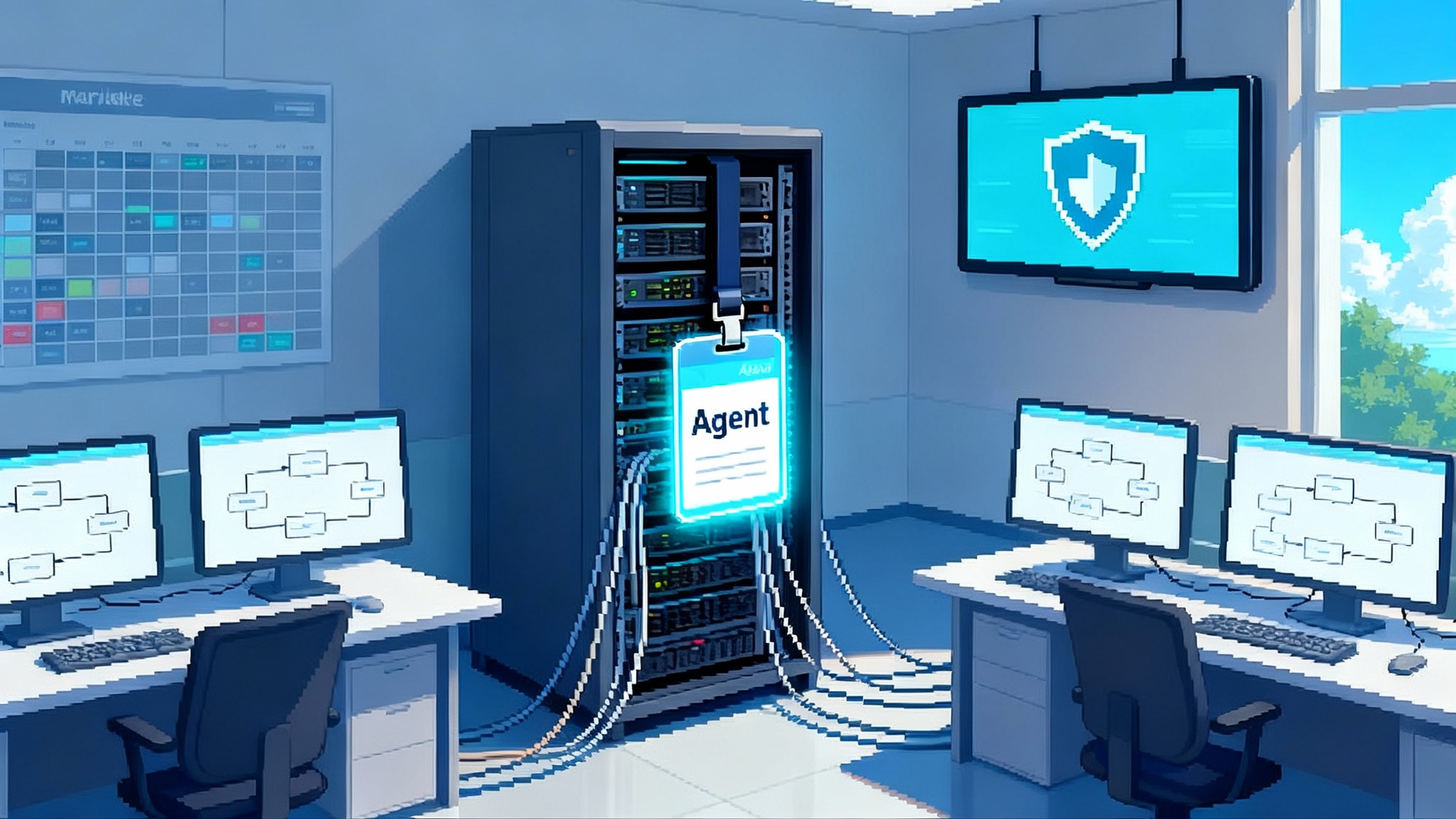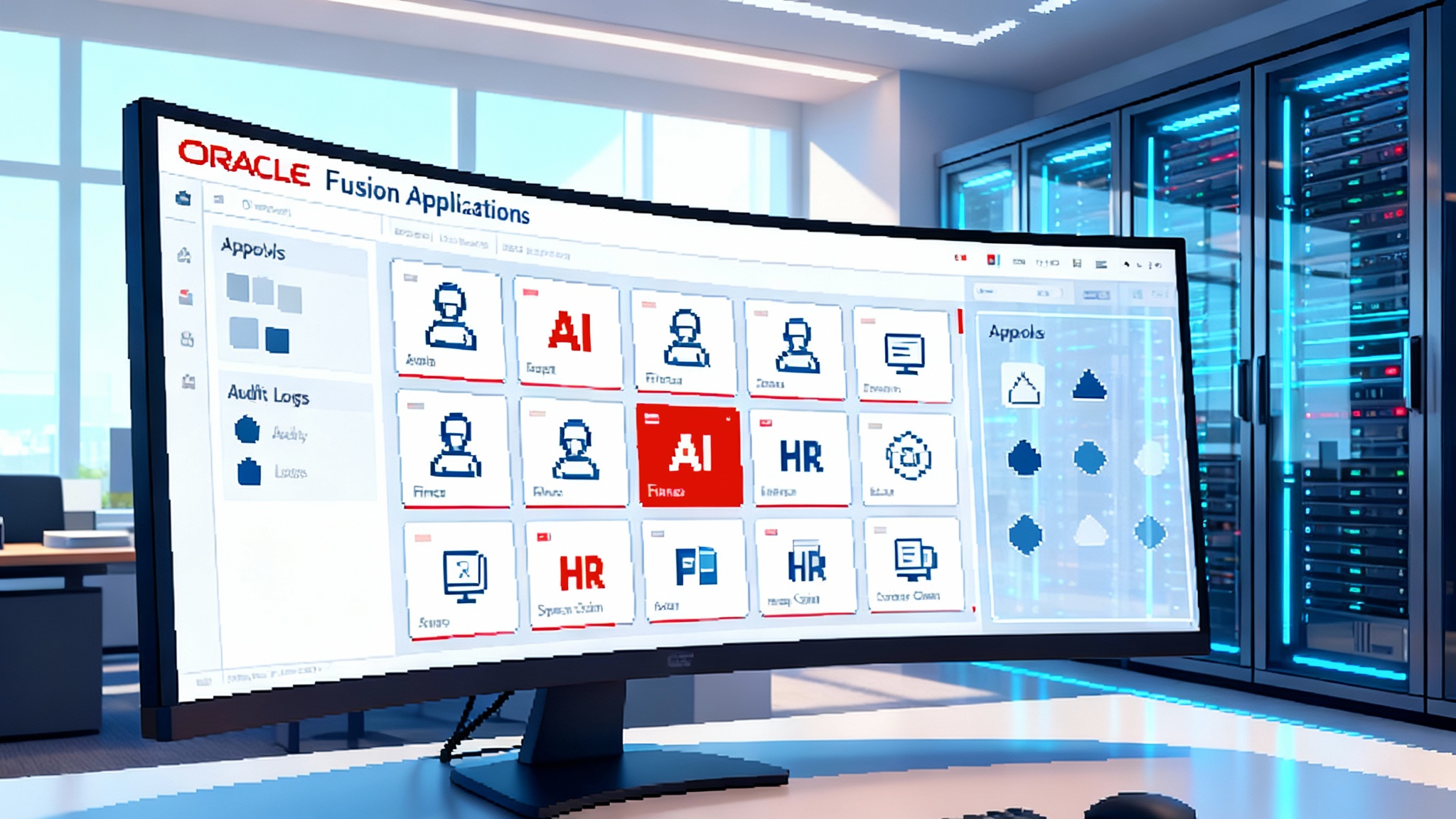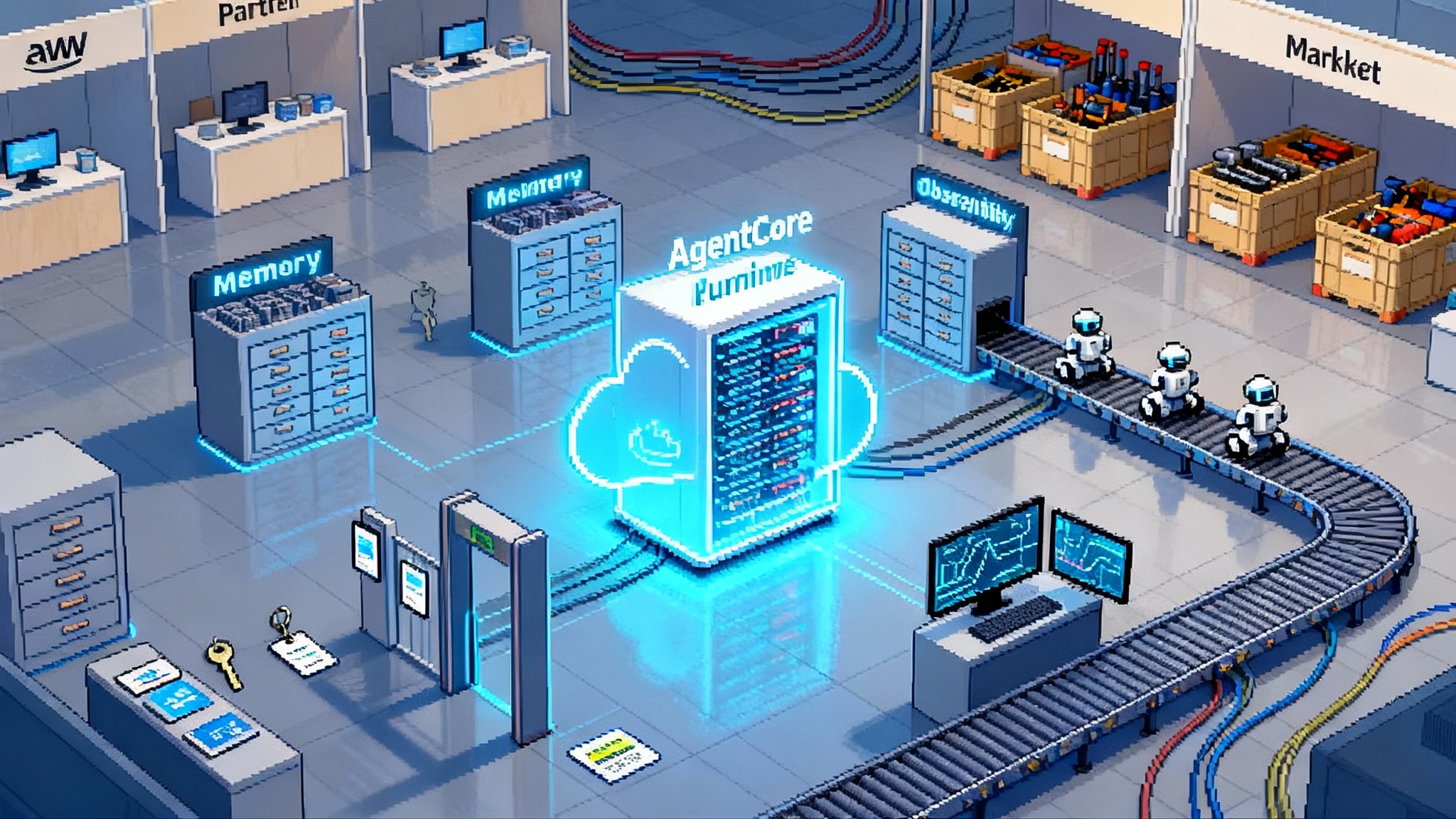ChatGPT Agent Goes Mainstream as Operator Becomes Mode
OpenAI folded Operator into a unified ChatGPT Agent and put it in the apps millions already use. Here is what actually shipped, what is still gated, how it compares to Microsoft and Anthropic, and how to prepare your workflows.

The moment Agent mode grew up
On July 17, 2025, OpenAI did more than ship a feature. It changed how everyday users think about getting work done with artificial intelligence. Operator, the company’s computer-using agent that could click, type, and scroll across the web, graduated into a unified ChatGPT Agent that now lives as Agent mode inside ChatGPT. The pitch is simple: ask for an outcome, let ChatGPT research, navigate websites with a visual browser, pull from connected accounts, and deliver editable work products while showing its steps. It is the difference between a helpful intern waiting for prompts and a reliable teammate that takes a scoped task to completion. For the official framing, see OpenAI’s launch post on Agent mode.
For two years, agents mostly lived in demos and developer sandboxes. In July and August, Agent mode started appearing exactly where millions already type their questions, inside the standard ChatGPT composer. That familiarity matters. You do not visit a special preview site. You toggle a tool you already use. New habits form faster when they fit existing muscle memory.
What changed under the hood
Think of the new agent as a multi tool that can pick the right blade without asking you to swap attachments:
- A visual, virtual computer to operate websites like a person would. It can click, fill forms, upload files, and handle dynamic pages that only render content after scripts run.
- A text first web reader for fast lookups when a full browser is overkill.
- File and code tools to analyze spreadsheets, notebooks, and structured data, then export working artifacts like slides and sheets for you to refine.
- Connectors to services such as mail, calendars, drives, and code hosts so the agent can see relevant context. You stay in control, and it asks you to log in when it needs to act on an account.
- Deep research as a built in strategy rather than a separate mode. If a task needs hours of reading in minutes, it plans a route, follows links, and cites what it found.
The important pattern is orchestration. The agent chooses among skills, swaps tools mid run, and narrates its plan as it goes. That narration is not decoration. It is how the product earns trust while it acts, letting you correct course with minimal friction.
What is live now, and what is still gated
Here is the state of play based on July to August availability and follow on updates.
Live today
- Plans and access. Agent mode is available to paid ChatGPT users. It launched for Pro, Plus, and Team on July 17. In early August, availability expanded to Enterprise and Education accounts. Message allowances differ by plan, with higher limits on Pro and flexible credits for spikes on other tiers.
- Apps. Agent mode runs on the web and mobile apps. The macOS desktop app exposes Agent mode in the toolbar and through shortcuts, with a staggered rollout that reached Plus and then broader paid users. Windows is catching up but has lagged the Mac for Agent specific features in several regions.
- Capabilities. The visual browser, text based browsing, code execution, and connectors are active. You can hand it a multi part request like “read these briefs, check my calendar, draft five slides with charts, then propose three slots to present.” It will split work across tools. It asks permission before actions with consequences and pauses for login when needed.
- Controls. You see an on screen timeline of steps, can pause or take over the browser, and can force the agent to retry with your edits. Workspace owners can request domain blocklists so the agent will not visit specific sites. Admins can turn on data residency and retention policies that match existing enterprise rules.
Still gated or in flux
- Geography. Consumer availability in parts of the European Economic Area was limited at launch. Enterprise workspaces with European data residency have since gained support, while some consumer accounts in those regions remain staged. Expect region by region toggles as safety and compliance reviews finish.
- Desktop parity. macOS got Agent mode first. Windows parity is improving, but some Agent features and voice experiences arrive later on Windows than on Mac.
- Reporting. Usage analytics for Agent mode are rolling in but are not feature complete everywhere. Expect richer dashboards, per connector auditing, and action logs to become standard.
- Polished outputs. Slides and complex document exports are practical but not always presentation ready. The path from structured draft to client ready deck is improving, but design polish still benefits from a human pass.
The net: the core is here, the edges are being sanded, and enterprise grade governance is expanding in visible increments.
How permissioning and safety shape trust
“Let me drive, but keep your foot near the brake.” That is the product philosophy in plain language. In practice, it looks like this:
- Pre flight plans. Before acting, the agent writes down a step by step approach you can accept or edit. The more consequential the task, the more explicit the plan.
- Action confirmations. Purchases, publishing, mass edits, and anything that touches personal or customer data trigger a confirmation. If a site requests a login, the agent stops until you authenticate.
- Visible context. A live activity panel shows every page the agent visits and every form it edits. You can click into any step, take control, and continue manually.
- Sandboxing. The visual browser runs in a separate virtual computer rather than on your machine. That reduces the risk that a bad page could touch local files or apps.
- Organizational rails. Admins can set allowlists and blocklists for websites, require human approval for certain actions, and enforce data retention. In regulated industries, these controls make the difference between a neat demo and a deployable tool.
These are not nice to haves. Real adoption hinges on them. People will delegate only after they see and shape what the agent is doing.
What this unlocks in daily work
The leap from answering questions to finishing tasks unlocks four practical patterns.
-
Better handoffs. You can start with an open prompt, then switch to a concrete deliverable without hopping tools. For example, “Scan my inbox for supplier updates, summarize changes, and add a three slide summary to last week’s deck.” The agent pulls mail via a connector, drafts content, and edits the deck.
-
Maintenance tasks that never get done. Weekly status reports, expense reconciliations, price checks, and calendar housekeeping are nobody’s favorite work. They are ideal agent jobs because success is measurable and the steps are repeatable.
-
Research plus action. The agent can read annual reports, compare filings, produce a model, then email stakeholders a short brief for review. Combining research with distribution is where minutes saved turn into hours.
-
Cross tool coordination. Connectors let the agent touch several systems in one run. It can move from a web catalog to a spreadsheet template to an internal knowledge base without asking you to copy and paste.
If you lead a team, start with tasks that have a clear definition of done and low blast radius. If the output is wrong, can you catch it quickly and roll back safely. If yes, you have a candidate.
The competitive stakes: Microsoft and Anthropic
Microsoft spent the spring and summer seeding enterprises with agents that run on triggers, work across systems, and coordinate with each other. Copilot Studio’s autonomous agents are generally available, and multi agent orchestration lets several agents collaborate with human oversight. For large organizations that already live in Microsoft 365, these shipping features are a strong pull. They show up where people already work, plug into existing identity and governance, and come with admin tools central IT understands. Microsoft previewed multi agent collaboration at Build in May and positioned it as the backbone of human agent teams. See the Build 2025 post on multi agent orchestration for the company’s own description.
Anthropic is taking a narrower but notable path through the browser. Claude for Chrome launched as a limited pilot that can view pages, click, and fill fields with site level permissions and strong prompts to confirm risky actions. That approach reflects a security first posture and recognizes how easily a web page can try to steer an agent. For now, Claude’s agent feels like a precision instrument for users who spend their day in Chrome and want an assistant in the sidebar that can act, but only with explicit consent.
The lines are clear. OpenAI is centering a general purpose agent inside ChatGPT that runs on its own virtual computer across apps. Microsoft is pushing enterprise native agents that orchestrate across 365 with central control. Anthropic is proving out a browser forward agent with strict permissions. All three are racing to turn delegated execution into daily habit.
Where Agent mode still lags
- Document polish. The agent can generate and edit slides, tables, and charts, but formatting can feel utilitarian without a human finishing pass.
- Long, fragile runs. Very long tasks raise the odds of one site blocking a bot, a login expiring, or a page changing. The product is getting better at recovering, but reliability still favors scoped, multi step runs over marathons.
- Analytics that managers love. The run transcript is great for individual trust. Managers want trend dashboards, variance alerts, and per connector metrics. Those exist in parts and are arriving in more places, but they are not uniform yet.
These are solvable gaps, but they matter if you want to move a department from pilots to policy.
A 6 to 12 month forecast: from prompts to delegated execution
The next year will be shaped less by model jumps and more by workflow engineering. Here is what to expect, and how to prepare.
What to expect
- Task catalogs at work. Enterprises will publish an internal catalog of approved agent tasks, similar to today’s request forms. Each entry will list scope, data sources, required approvals, and logs.
- Agent stores that matter. You will find and install agents the way you add integrations today. Prebuilt agents from vendors will appear in marketplaces and in your admin console, with identity, billing, and monitoring baked in.
- Event driven runs. Instead of typing a request, you will set triggers. A new invoice arrives, inventory dips below a threshold, a key account changes contact. The agent reacts within policy.
- Stronger permission models. Expect site level permissions, action level approvals, and role based limits to become standard. Admins will tune what an agent can do per workspace and per user group.
- Cross agent collaboration. Multi agent patterns will move from novelty to normal. One agent gathers data, a second reconciles it against policy, a third drafts outputs. You approve, and each step is logged.
What to do now
- Pick three repeatable, reversible workflows. Good candidates share a clear definition of done, clear inputs, and a low risk rollback. Examples include weekly metrics digestion, competitive brief updates, and recurring report formatting.
- Wire up connectors with intention. Start with the minimum accounts needed. Use service accounts where possible to avoid personal token sprawl. Document who owns each connector and why.
- Set a permission baseline. Turn on confirmations for posting, purchasing, or data sharing. Require human approval for any cross tenant or public action until you have weeks of clean logs.
- Measure saved minutes, not vibes. Log how long a task takes today, then rerun it with the agent and report the delta. Post real numbers to the team. Adoption follows evidence.
- Train people to read the plan. The narration pane is the cockpit. Teach users to scan it before approving. Better inputs plus better oversight compound into better results.
If you are evaluating the broader ecosystem, compare the ChatGPT approach to other platforms already investing in agent orchestration. For example, teams that coordinate across several vendors may benefit from the GitHub Agent HQ overview. Organizations pushing agents from demo to production workflows will recognize patterns from the AgentKit deployable platform shift. And if your focus is consumer behavior, the Manus consumer agent rollout offers a useful foil for how habits form once agents are one click away.
The consumer story: habits make the market
Agents win when they are one click away where people already are. That is why the Mac app rollout matters. It puts Agent mode next to your files and your clipboard. It is also why mobile support matters. The agent that can find a reservation, check your calendar, and confirm a booking while you commute will feel indispensable in a way a demo never could.
The transition will be gradual. Some regions will lag. Some features will stay behind admin toggles. But the days of switching to a special preview site for basic agent behavior are over. The agent arrived where the users are.
A quick adoption blueprint
Below is a starter blueprint you can copy into an internal doc. Treat it as a living checklist rather than a one time plan.
Preparation
- Identify three candidate workflows that run weekly or monthly and absorb more than 30 minutes each. Define owners and a definition of done for each.
- Map data sources for each workflow. List which accounts and connectors are required. Prefer shared service accounts over personal credentials.
- Define a permission policy. Mark actions that always require human approval, such as posting to external channels or initiating purchases.
Pilot
- Run each workflow twice with a human in the loop. Record plan steps, time to complete, and any manual corrections.
- Enable logging and transcript capture. Make transcripts accessible to reviewers so they can spot recurring failure modes.
- Set clear halt conditions. If the agent encounters a login wall, a blocked domain, or a broken selector more than twice, pause and fix the blocker before rerunning.
Rollout
- Expand to a small team only after two consecutive clean runs. Share before and after time comparisons.
- Turn pilot lessons into a playbook. Document inputs, approvals, known pitfalls, and rollback steps.
- Add a review cadence. Once per month, inventory tasks, remove low ROI automations, and promote proven runs to your official task catalog.
Bottom line
OpenAI’s move to fold Operator into a unified ChatGPT Agent inside the apps people already use marks the point where agents stop being a spectacle and start being a utility. The safety rails are not just ethical posture. They are the product. The controls make it possible to delegate real work with eyes open.
Meanwhile, Microsoft is tightening its grip on the enterprise with multi agent orchestration inside 365, and Anthropic is proving out a rigorous browser first approach. The near term will not be won by the flashiest demo. It will be won by the stack that turns a dozen repeatable tasks into reliable habits with clear controls and measurable time saved.
If you want to be ready for that future, do not wait for the next model name. Write down three workflows, wire the right connectors, set conservative permissions, and let the agent take the wheel while you keep a hand on the brake. Habits formed now will compound into advantage when delegated execution becomes the default.








